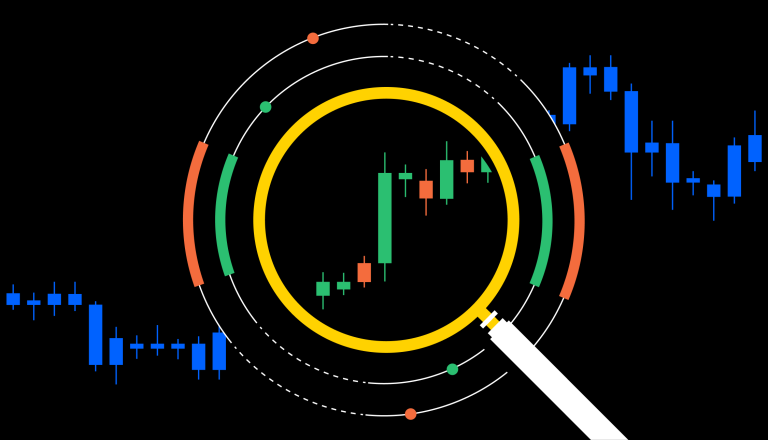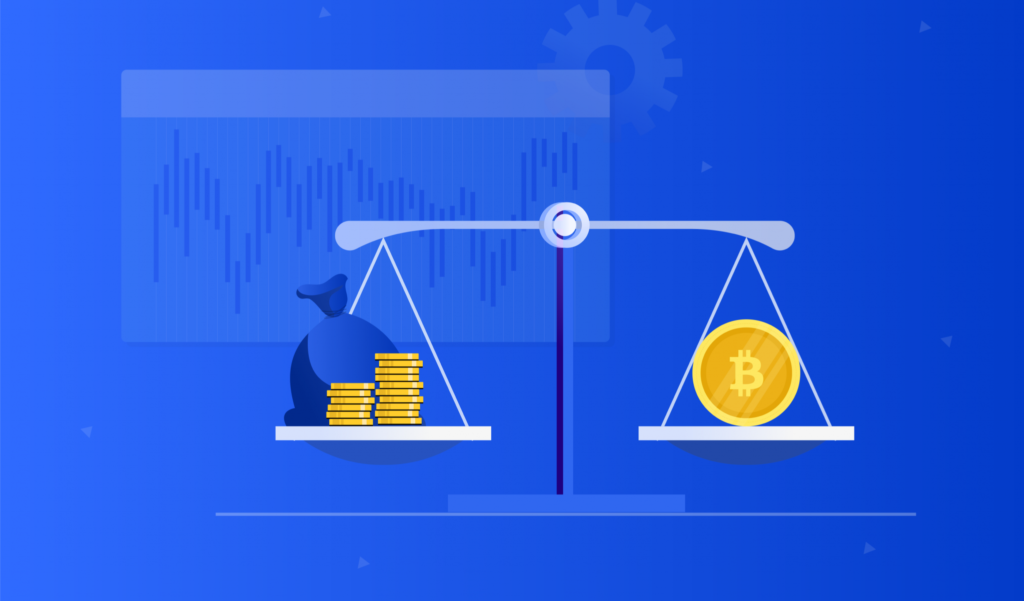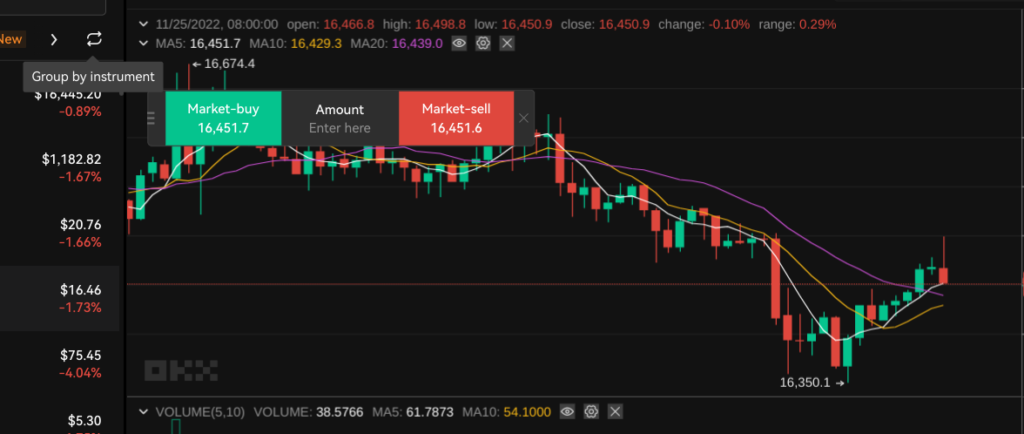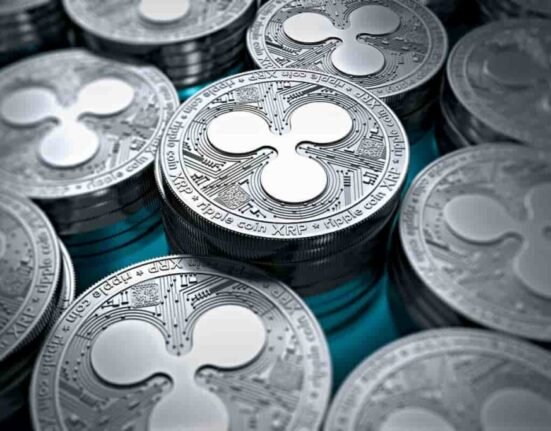What Is a Spot Trade?
A spot trade, also known as a spot transaction, refers to the purchase or sale of a foreign currency, financial instrument, or commodity for instant delivery on a specified spot date. Most spot contracts include the physical delivery of the currency, commodity, or instrument; the difference in the price of a future or forward contract versus a spot contract takes into account the time value of the payment, based on interest rates and the time to maturity. In a foreign exchange spot trade, the exchange rate on which the transaction is based is referred to as the spot exchange rate.
A spot trade can be contrasted with a forward or futures trade.
In simple words, this trading in crypto refers to buying and selling cryptocurrencies for immediate delivery or settlement. In other words, when you engage in spot trading, you exchange one cryptocurrency for another at the current market price without delay or future delivery.
When you engage in this trading, you’re typically looking to profit from short-term price fluctuations in the market. For example, you might buy a cryptocurrency when you think its price will increase and then sell it shortly after to realize a profit. Alternatively, you might sell a cryptocurrency when you consider its price will decrease and repurchase it later at a lower price.
KEY TAKEAWAYS
- Spot trades involve securities traded for immediate delivery in the market on a specified date.
- Spot trades include the buying or selling of foreign currency, a financial instrument, or commodity
- Many assets quote a “spot price” and a “futures or forward price.”
- Most spot market transactions have a T+1 settlement date.
- This market transactions can take place on an exchange or over-the-counter.

Table of Contents
Understanding a Spot Trade
Foreign exchange spot contracts are the most common type and are usually specified for delivery in two business days, while most other financial instruments settle the next business day. The spot foreign exchange (forex) market trades electronically around the world. It is the world’s largest market, with over $7.55 trillion traded daily; its size dwarfs both the interest rate and commodity markets.123
The current price of a financial instrument is called the spot price. It is the price at which an instrument can be sold or bought immediately. Buyers and sellers create the spot price by posting their buy and sell orders. In liquid markets, the spot price may change by the second, as outstanding orders get filled and new ones enter the marketplace.
Important: Foreign exchange spot contracts are the most popular and the spot foreign exchange market, traded electronically, is the largest in the world.4
How Does It Work?
This trading allows users to buy or sell cryptocurrencies at the current market price in real-time. Here are the basic steps involved in a typical crypto spot trade:
- Choose a cryptocurrency exchange: The first step is to choose a cryptocurrency exchange that supports spot trading. Some popular exchanges include Binance, Coinbase, and Kraken.
- Create an account: Once you’ve chosen an exchange, you must create an account by providing your personal information and verifying your identity.
- Fund your account: After creating an account, you must fund it with fiat currency (such as USD or EUR) or another cryptocurrency.
- Choose the cryptocurrency pair: You must choose the cryptocurrency pair you want to trade. For example, you would choose the BTC/USD pair to buy Bitcoin using USD.
- Place an order: Once you’ve selected the cryptocurrency pair, you can order to buy or sell the cryptocurrency at the current market price. You can also choose to place a limit order, which allows you to specify a particular price at which you want to buy or sell the cryptocurrency.
- Execute the trade: If your order is accepted, the trade will be executed immediately, and you’ll receive the purchased cryptocurrency in your exchange wallet.
- Withdraw your funds: Finally, you can withdraw your funds (either fiat currency or cryptocurrency) from the exchange and transfer them to your personal wallet.
It’s important to note that the price of cryptocurrencies can be volatile and may change rapidly. Hence, exercising caution and conducting your own research is important before engaging in this trading.
Pros and Cons of Spot Trading
There are several pros and cons to consider when it comes to crypto spot trading:
Pros
- Immediate execution: With this trading, you can buy or sell cryptocurrencies immediately at the current market price, allowing you to take advantage of short-term price movements and capitalize on opportunities.
- Simplified process: This trading is relatively straightforward compared to other forms of trading, such as futures or options trading, which can be more complex and require more expertise.
- Low fees: This trading typically has lower fees than other forms of trading, making it a cost-effective way to trade cryptocurrencies.
- High liquidity: This trading is often highly liquid, meaning there are many buyers and sellers, making it easy to execute trades quickly and efficiently.
Cons
- Volatility: The high volatility of cryptocurrencies can make this trading risky, as the price of cryptocurrencies can fluctuate rapidly and unpredictably.
- Limited options: This trading only allows for buying and selling cryptocurrencies at the current market price, which means that you may have fewer options for trading strategies than other forms of trading.
Overall, this trading can be a good way to trade cryptocurrencies for those comfortable with the risks involved and want a simple and cost-effective way to take advantage of short-term price movements. However, it’s important to do your research and understand the risks involved before engaging in any trading.
Spot Trading Vs. Futures Trading Vs. Margin Trading
Here are some of the key differences between these trading methods:
Spot trading
- Immediate execution: In spot trading, trades are executed immediately at the current market price.
- Low fees: Spot trading typically has lower fees compared to futures trading.
- No expiry date: Spot trading does not have an expiry date, so you can hold your positions for as long as you want.
- Simple: Spot trading is relatively straightforward, making it a good option for beginners.
Futures trading
- Speculation: Futures trading is often used for speculation or hedging against future price movements.
- High leverage: Futures trading allows for high leverage, meaning traders can make larger trades with smaller amounts of capital.
- Expiry date: Futures contracts have an expiry date, which means that traders must close their positions before the expiry date.
- Complex: Futures trading can be more complex and requires greater expertise than this trading.

Margin trading
- Leverage: Margin trading allows you to borrow funds from a broker to increase your trading position and potential profits.
- Higher risk: Margin trading is riskier than spot trading because of the increased leverage and the potential for greater losses.
- More complex: Margin trading can be more difficult and requires greater expertise than spot trading.
- Higher fees: Margin trading typically has higher prices than this trading because of the additional costs associated with borrowing funds.
This trading is better suited for those who want to buy or sell cryptocurrencies at the current market price. In contrast, futures trading is better suited for those who want to speculate on future price movements or hedge against potential losses. At the same time, margin trading is better suited for those who wish to increase their trading position and potential profits through leverage. Understanding the differences between the three is important as choosing the best fits your trading goals and risk tolerance.
Is Spot Trading Profitable?
Spot trading can be profitable but involves risk, and profits are not guaranteed. The profitability of spot trading depends on various factors, such as market conditions, the timing of trades, and the individual trader’s knowledge and experience.
To increase the chances of profitability, traders may employ various strategies, such as technical analysis, fundamental analysis, or trading on news events. Traders may also use risk management techniques, such as setting stop-loss orders, to limit potential losses.
How Do You Profit From Spot Trading?
Generally, spot traders buy assets, like cryptocurrency or stocks, at a low price and wait for their value to increase before selling them. Because of the nature of spot trading, this method of investing allows you to hold your tokens for multiple years.
Many traders use spot markets to dollar-cost-average into their favorite cryptocurrencies and wait for the next bull market to realize their profits. Since most crypto coins eventually go up, patient traders generally make good profits.
It is important to remember that the profits only become real after you sell your crypto for fiat currency or your stablecoin of choice.
In traditional markets, buying stocks also generates profits in the form of dividends, where companies distribute a portion of their earnings to shareholders.

This trading allows you to profit by buying an asset at a lower price and then selling it at a higher price. It’s like buying anything else – you want to get a good deal on something that will eventually be worth more.
Here are some things to keep in mind to improve your chances of profiting from spot trading:
- Do your research: Understand the asset you’re trading and the factors that affect its price. This could involve news events, technological advancements, or even just general market sentiment.
- Use trading strategies: There are many strategies out there, like technical analysis or fundamental analysis, that can help you identify potential buying and selling opportunities.
- Risk management: This is crucial. Always use stop-loss orders to limit your potential losses if the market moves against you. You can also take profits regularly to lock in your gains.
- Start small: Especially if you’re new to this trading, it’s wise to start with a small amount of money to get comfortable with the process before risking larger sums.
Remember, spot trading can be profitable, but it also comes with inherent risks. By doing your research, employing sound strategies, and managing your risk carefully, you can increase your chances of success. Be aware that even with all the precautions, there’s no guarantee of profits.
Pick a spot market to trade
Choose from thousands of financial markets, including:
- Forex, with major pairs such as GBP/USD and EUR/USD
- Commodities, including oil, gold and silver
- Shares, such as Apple, BP and Barclays
- Indices, including the FTSE 100, Germany 40 and US 500
- ETFs, including iShares Core S&P 500 ETF and the Vanguard FTSE 100 UCTIS ETF
Is Spot Trading the Same as Buying?
This trading and buying are often used interchangeably, but buying does not cover the charge of spot trading completely. Firstly, a trade is not complete until a sales transaction is made, and profits or losses are realized. Moreover, what differentiates spot trading from “buying” is that it only allows you to use the capital you already have access to. You cannot borrow money from a brokerage or exchange to trade in this market.
Special Considerations
Forward Pricing
The price for any instrument that settles later than the spot is a combination of the spot price and the interest cost until the settlement date. In the case of forex, the interest rate differential between the two currencies is used for this calculation.
Other Markets
Most interest rate products, such as bonds and options, trade for spot settlement on the next business day. Contracts are most commonly between two financial institutions, but they can also be between a company and a financial institution. An interest rate swap in which the near leg is for the spot date usually settles in one business days.5
Commodities are usually traded on an exchange. The most popular is the CME Group (previously known as the Chicago Mercantile Exchange) and the Intercontinental Exchange, which owns the New York Stock Exchange (NYSE). Most commodity trading is for future settlement and is not delivered; the contract is sold back to the exchange prior to maturity, and the gain or loss is settled in cash.
Types of Cryptocurrency Spot Market
There are two major types of spot markets. Most of you must be familiar with exchanges, where supply and demand are brought together on a single platform. These exchanges allow you to buy or sell assets quickly at the market price.
Using an order book, traders even get information on the amount of Bitcoin available for sale and its demand. It can help them get a better understanding of the available liquidity in the market.
Another type of this market is found in over-the-counter (OTC) trading. OTC trades happen when a buyer and seller transact directly, without a third party or trading platform to oversee the trade. The two parties may choose to transact assets at any price they see fit, whether below or above the market price.
This type of trade is popular because it lets traders negotiate on multiple items other than price. As an example, OTC markets are a great place to buy a large amount of cryptocurrency, without causing the volatility you would cause by buying on the open market.
What Are the Risks?
Depending on the market you are trading, there are various risks that traders need to consider. Firstly, liquidity in this market can dry up over time. Especially during bear markets, smaller altcoins tend to lose most of their liquidity. As a result, traders may struggle to find a place to sell their tokens for fiat at a fair market price. When there is insufficient liquidity, you will be forced to either sell at a lower price than the market value or hold on to your investments.
Another risk presents itself when you decide to trade commodities on the spot market. For example, if you spot purchase crude oil, you will have to get it delivered physically. Yes, real, physical crude oil will be delivered to you. Finally, because this trading does not allow for margin, your profit potential is limited.
What Are the Benefits?
At the same time, the lack of margin in spot trading protects you from losing more capital than you want to. This trading is one of the safest ways of investing, allowing you to hold onto your investments without much worry.
Prices of the this market are very transparent because it is purely based on supply and demand. When trading other instruments, such as derivatives, futures or options, there are multiple other factors influencing price, such as time.
Because this trading allows you to own assets outright, you do not have to worry about interest payments or maintenance margins. It allows you to buy Bitcoin in 2022, forget about it for a few years, and come back to sizeable profits in 2028
The Bottom Line
In conclusion, spot trading is an essential aspect of financial markets that allows investors to buy or sell assets for immediate delivery or settlement. It offers several advantages, including liquidity, transparency, and flexibility, making it a popular choice among traders worldwide.
However, this trading also involves risks such as price volatility and counterparty risk, which investors must manage effectively. Overall, this trading plays a critical role in facilitating price discovery and market efficiency, enabling investors to make informed investment decisions and capitalize on market opportunities.
Disclaimer ||
The Information provided on this website article does not constitute investment advice ,financial advice,trading advice,or any other sort of advice and you should not treat any of the website’s content as such.
Always do your own research! DYOR NFA
Coin Data Cap does not recommend that any cryptocurrency should be bought, sold or held by you, Do Conduct your own due diligence and consult your financial adviser before making any investment decisions!



